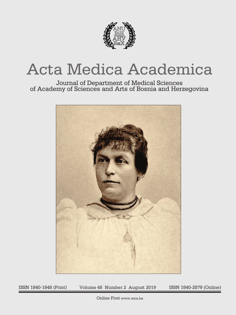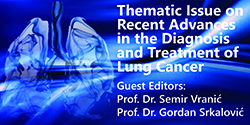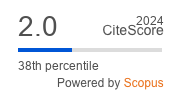Quantitative Analysis of CCL5 and ep300 in Periapical Inflammatory Lesions
DOI:
https://doi.org/10.5644/ama2006-124.251Keywords:
Chemokine CCL5, E1AAssociated P300 Protein, Periapical Granuloma, Periapical Periodontitis, Radicular CystAbstract
Objectives. In silico bioinformatical analysis suggested that the expression of two genes, CCL5 (C-C Motif Chemokine Receptor 5) and ep300 (Histone acetyltransferase p300), could be used as potential new biomarkers in differentiation between periapical granulomas and radicular cysts. Thus, we hypothesized that gene expression of CCL5 and ep300 in periapical lesions would classify the lesions as either granuloma or cyst.
Materials. Patient samples (n=122) included 46 periapical granulomas, 38 radicular cysts and 38 healthy gingival samples as controls. Real-time PCR analysis of CCL5 and ep300 transcripts was compared to SDHA (Succinate dehydrogenase complex, subunit A) as the reference. Clinical parameters (e.g., intensity of inflammation and lesion size) were measured and correlated with CCL5 and ep300 expression. ROC (Receiver operating characteristic) and logistic regression analyses were used to establish the diagnostic character of ΔCt values.
Results. Granulomas and radicular cysts had significantly higher expression of CCL5 and ep300 compared to controls (P<0.05). However, no differences were observed when comparing granulomas and radicular cysts. ROC analyses showed that CCL5 and ep300 have good diagnostic accuracy, but low accuracy for distinguishing between the lesions.
Conclusions. This study confirmed that expression of CCL5 and ep300 is relevant for the pathogenesis of periapical inflammatory lesions but cannot be used as a distinctive marker between these lesions.






